Featured Articles
REST IN PEACE, STUART SCOTT, A HALL OF FAMER OF A HUMAN BEING

They used to write in, the knuckleheads, and try and bust his chops.
They’d bust on his lazy eye…or try to take him down a notch by noting that he’d sit on a fence too often, not make that hard call and take a side.
The haters, I guess you call them today, never got under the thick skin of Stuart Scott when I’d call his cell, and inform him it was time to do his online chat with his rooters and non-rooters, who’d ask him about this college basketball game, or that sports star busted for this infraction or another…or what he had for breakfast.
Over the course of the couple of years I facilitated the chat, from the then-office of ESPN The Magazine in NYC, because we’d run some of the best questions and answers in a column called “Stuart Scott’s Two Way” in the Mag. So every couple weeks, I’d gather and pick questions from the pack of queries we’d get over the span of time since the last chat…and in all those years, I do not recall anyone getting under the skin of Stu.
I thought back to this frame of time, which spanned maybe 2006 to mid 2011, when the suits declared it time for all to gather at the mothership in Bristol, to save money on rent and, I don’t know, follow McKinsey style wisdom, or whatever. Basically, I’d look forward to the time spent with Stuart, over the phone, not because he was particularly illuminating as a chatter, or dropped wisdom nuggets with much frequency, or what have you…but more so because he impressed me as a human being.
I could have really cared less about Duke basketball, or 99% of the stuff people wrote in about. My beat was and is boxing, though I’d cherry pick fight questions to Stu now and again.
Hey, I guess now it can be told, I might have once or twice dropped in my own question, such as ‘Who do you think is to blame for the Floyd Mayweather-Manny Pacquiao fight not happening?, under the nom de fake “Tommy from Arlington, Mass,” or something, if and when the query box was on the light side.
Yes, fair to say the questions and the answers weren’t a heavy draw for me. The man’s optimism, his exceedingly sunny disposition, and his attitude as he weathered storms like a split from his missus, and then his public fight with cancer, were what made him special to me.
I’d try and sway him from that mindset, sort of play that devil’s advocate, stir the pot, manufacture some drama, when a ninny would write in with maybe a lazy eye comment.
Now, Stu wasn’t always the ultra cheerful and uncommonly upbeat dude you saw on SportsCenter, not with me, anyway. Maybe he’d been traveling too much, and was burnt out from the road, and was missing his girls, then a teen and a preteen. He was never curt with me, but that “on” switch wasn’t energizing him as much on some days then others. So a back and forth might go something like this:
“Stu, you wanna hammer this deebag from Texas?”
“What’s he saying, Woodsy,” Stu would ask, with a chuckle.
“Eh, made a crack about your eye.” Stu would chuckle…pause…“Uh, should I? I don’t know….Maybe the guys’ girlfriend just broke up with him or something…Eh, should I? Naw, we let it go. Let’s do another one…”
I’d frown, the devil in me unsated, and I’d fire him a query about the latest basketball game I knew nothing about. Yep, he’d often hop onto a fence, and see both sides of an issue, and veer away from any sort of journalistic skepticism and fact finding and spin-free analysis, and right towards the lane of kindness and decency and not making waves. That niceness, as niceness often is, wasn’t appreciated by all; stop kissing asses, someone would invariably post to me, the moderator, during the chat. But that wasn’t Stuart’s way. He was not put on this earth to make those sort of waves. But there is no shortage of folks willing to do that. I now fully realize, on this day I learned that my man Stuart died, the cancer which he battled with the zest and fury of the very best fighters we’d sometimes talk about, in the worlds of pugilism, and MMA, which he practiced, even when chemo left him at less than fifty percent of energy, what his role was on this earth.
You too, I bet, now fully understand, if you check Twitter, or turn to ESPN’s SportsCenter, the immensity of the legacy Stuart Scott, born in 1965, died in 2015, to live on forevermore, what the man’s imprint will be.
Great God, the strength he imparted in people. The courage he helped instill in poor souls pondering their imminent fate, when the chemo and the radiation and the pills and the prayers ran their course, and fate’s ugly, bony hand loomed just over head, readying to pluck another good one from our midst. That legacy kicks ass on the legacy of all those sports titans people wrote in to talk about. I have no problem saying that, shouting it to the rafters, where the retired jerseys wave in the wind. Michael Jordan, sorry; Tom Brady, not even close; pick your All-Star and I will tell you no dice, your man or woman didn’t and will not leave behind what Stuart Scott did.
Some tears are forming as I type this, because I’m sitting next to my girls, ages 4 1/2 and 7 1/2, on the sofa of our Brooklyn apartment. They have no idea, they are watching Tom and Jerry, and eating frozen peas out of a bag, even though they are not supposed to eat on the couch. LOL. I just about always find myself thinking about my girls when I’d think about Stuart, because we’d always chat about them, his Taelor and Sydni, my Annabelle and Juliette, ask the other how they were doing, when we shot the shit for a minute or two before the chat barrage commenced.
I last interacted with Stu on Nov. 11. I’d seen a Tweet which referenced him being in hospice. I have the record of texts between us from March 12 onward, after I’d told him I was thinking of him, rooting for him, hoping he’d be able to get off the canvas yet again, and pull off a Hail Mary upset win.
“Thank you brotha, means a lot,” he wrote to me March 12. “Handle yo bizness out there…Take care of those lil angels.” You see that? He’d steer it away from himself, from a pity or self pity zone, and back at me. That is a real skill, that is an attribute a thousand times more laudable than a dead-on jumper from 20 feet, or the ability to fire a fastball at 95 MPH. On Aug. 15, I checked in again, saying hi, sending good vibes, as I’m not a prayer guy. He answered: “Hey brotha. A buddy sent me this for this shit I’m goin thru…Works for any battle…”For now, lie in the bushes and rest. Gain strength. When the time is right, we’ll rise up and kill them all.”
LOL, I like the ferocity of that saying, the candid recognition that many of us see life as much battle as anything else. “Take care of your kids,” he ended with.
On Nov. 11, I told him I was thinking of him. That’s all..I didn’t want to pry, ask for an update. “Thanks brotha. Take care of those 2 adorable kids, brotha. Thanks for the HOLLA.”
“You got a full helping and then some on your plate,” I responded, “and then some! And along the way, you are lifting countless folks up, to help them face their trials. #PROPS,” I texted.
“Thanks Bruh…Means a ton!!”
Two exclamations points…a communication of heartfelt and intense goodwill, from a man who had every reason to be morose, or indulging in meditative isolation…and that was it.
Today, I got the word, news I didn’t want delivered.
Brotha Stu, the world is down one great dude today. The sting of the loss will linger for a spell…but the gargantuan nature of the positivity you spread around so selflessly, and the salve you provided to people facing the darkness of terminal illness, those things will linger far longer…
You made me a better man, just a bit, and I thank you, and I will miss you.
Peace, brotha.
Follow Woods on Twitter. https://twitter.com/Woodsy1069
Featured Articles
Arne’s Almanac: The First BWAA Dinner Was Quite the Shindig
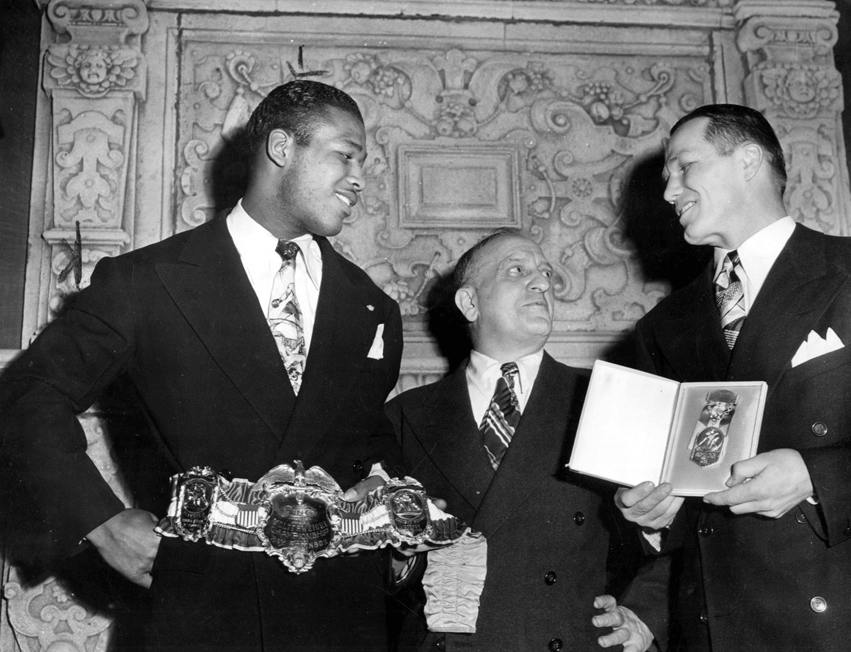
The first annual dinner of the Boxing Writers Association of America was staged on April 25, 1926 in the grand ballroom of New York’s Hotel Astor, an edifice that rivaled the original Waldorf Astoria as the swankiest hotel in the city. Back then, the organization was known as the Boxing Writers Association of Greater New York.
The ballroom was configured to hold 1200 for the banquet which was reportedly oversubscribed. Among those listed as agreeing to attend were the governors of six states (New York, New Jersey, Massachusetts, Pennsylvania, Connecticut, and Maryland) and the mayors of 10 of America’s largest cities.
In 1926, radio was in its infancy and the digital age was decades away (and inconceivable). So, every journalist who regularly covered boxing was a newspaper and/or magazine writer, editor, or cartoonist. And at this juncture in American history, there were plenty of outlets for someone who wanted to pursue a career as a sportswriter and had the requisite skills to get hired.
The following papers were represented at the inaugural boxing writers’ dinner:
New York Times
New York News
New York World
New York Sun
New York Journal
New York Post
New York Mirror
New York Telegram
New York Graphic
New York Herald Tribune
Brooklyn Eagle
Brooklyn Times
Brooklyn Standard Union
Brooklyn Citizen
Bronx Home News
This isn’t a complete list because a few of these papers, notably the New York World and the New York Journal, had strong afternoon editions that functioned as independent papers. Plus, scribes from both big national wire services (Associated Press and UPI) attended the banquet and there were undoubtedly a smattering of scribes from papers in New Jersey and Connecticut.
Back then, the event’s organizer Nat Fleischer, sports editor of the New York Telegram and the driving force behind The Ring magazine, had little choice but to limit the journalistic component of the gathering to writers in the New York metropolitan area. There wasn’t a ballroom big enough to accommodate a good-sized response if he had extended the welcome to every boxing writer in North America.
The keynote speaker at the inaugural dinner was New York’s charismatic Jazz Age mayor James J. “Jimmy” Walker, architect of the transformative Walker Law of 1920 which ushered in a new era of boxing in the Empire State with a template that would guide reformers in many other jurisdictions.
Prizefighting was then associated with hooligans. In his speech, Mayor Walker promised to rid the sport of their ilk. “Boxing, as you know, is closest to my heart,” said hizzoner. “So I tell you the police force is behind you against those who would besmirch or injure boxing. Rowdyism doesn’t belong in this town or in your game.” (In 1945, Walker would be the recipient of the Edward J. Neil Memorial Award given for meritorious service to the sport. The oldest of the BWAA awards, the previous recipients were all active or former boxers. The award, no longer issued under that title, was named for an Associated Press sportswriter and war correspondent who died from shrapnel wounds covering the Spanish Civil War.)
Another speaker was well-traveled sportswriter Wilbur Wood, then affiliated with the Brooklyn Citizen. He told the assembly that the aim of the organization was two-fold: to help defend the game against its detractors and to promote harmony among the various factions.
Of course, the 1926 dinner wouldn’t have been as well-attended without the entertainment. According to press dispatches, Broadway stars and performers from some of the city’s top nightclubs would be there to regale the attendees. Among the names bandied about were vaudeville superstars Sophie Tucker and Jimmy Durante, the latter of whom would appear with his trio, Durante, (Lou) Clayton, and (Eddie) Jackson.
There was a contraction of New York newspapers during the Great Depression. Although empirical evidence is lacking, the inaugural boxing writers dinner was likely the largest of its kind. Fifteen years later, in 1941, the event drew “more than 200” according to a news report. There was no mention of entertainment.
In 1950, for the first time, the annual dinner was opened to the public. For $25, a civilian could get a meal and mingle with some of his favorite fighters. Sugar Ray Robinson was the Edward J. Neil Award winner that year, honored for his ring exploits and for donating his purse from the Charlie Fusari fight to the Damon Runyon Cancer Fund.
There was no formal announcement when the Boxing Writers Association of Greater New York was re-christened the Boxing Writers Association of America, but by the late 1940s reporters were referencing the annual event as simply the boxing writers dinner. By then, it had become traditional to hold the annual affair in January, a practice discontinued after 1971.
The winnowing of New York’s newspaper herd plus competing banquets in other parts of the country forced Nat Fleischer’s baby to adapt. And more adaptations will be necessary in the immediate future as the future of the BWAA, as it currently exists, is threatened by new technologies. If the forthcoming BWAA dinner (April 30 at the Edison Ballroom in mid-Manhattan) were restricted to wordsmiths from the traditional print media, the gathering would be too small to cover the nut and the congregants would be drawn disproportionately from the geriatric class.
Some of those adaptations have already started. Last year, Las Vegas resident Sean Zittel, a recent UNLV graduate, had the distinction of becoming the first videographer welcomed into the BWAA. With more and more people getting their news from sound bites, rather than the written word, the videographer serves an important function.
The reporters who conducted interviews with pen and paper have gone the way of the dodo bird and that isn’t necessarily a bad thing. A taped interview for a “talkie” has more integrity than a story culled from a paper and pen interview because it is unfiltered. Many years ago, some reporters, after interviewing the great Joe Louis, put words in his mouth that made him seem like a dullard, words consistent with the Sambo stereotype. In other instances, the language of some athletes was reconstructed to the point where the reader would think the athlete had a second job as an English professor.
The content created by videographers is free from that bias. More of them will inevitably join the BWAA and similar organizations in the future.
Photo: Nat Fleischer is flanked by Sugar Ray Robinson and Tony Zale at the 1947 boxing writers dinner.
Featured Articles
Gabriela Fundora KOs Marilyn Badillo and Perez Upsets Conwell in Oceanside
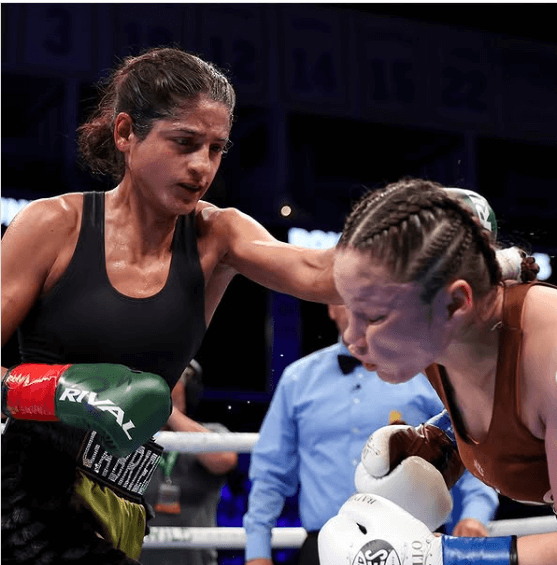
It was just a numbers game for Gabriela Fundora and despite Mexico’s Marilyn Badillo’s elusive tactics it took the champion one punch to end the fight and retain her undisputed flyweight world title by knockout on Saturday.
Will it be her last flyweight defense?
Though Fundora (16-0, 8 KOs) fired dozens of misses, a single punch found Badillo (19-1-1, 3 KOs) and ended her undefeated career and first attempt at a world title at the Frontwave Arena in Oceanside, California.
Fundora, however, proves unbeatable at flyweight.
The champion entered the arena as the headliner for the Golden Boy Promotion show and stepped through the ropes with every physical advantage possible, including power.
Mexico’s Badillo was a midget compared to Fundora but proved to be as elusive as a butterfly in a menagerie for the first six rounds. As the six-inch taller Fundora connected on one punch for every dozen thrown, that single punch was a deadly reminder.
Badillo tried ducking low and slipping to the left while countering with slashing uppercuts, she found little success. She did find the body a solid target but the blows proved to be useless. And when Badillo clinched, that proved more erroneous as Fundora belted her rapidly during the tie-ups.
“She was kind of doing her ducking thing,” said Fundora describing Badillo’s defensive tactics. “I just put the pressure on. It was just like a train. We didn’t give her that break.”
The Mexican fighter tried valiantly with various maneuvers. None proved even slightly successful. Fundora remained poised and under control as she stalked the challenger.
In the seventh round Badillo seemed to take a stand and try to slug it out with Fundora. She quickly was lit up by rapid left crosses and down she went at 1:44 of the seventh round. The Mexican fighter’s corner wisely waved off the fight and referee Rudy Barragan stopped the fight and held the dazed Badillo upright.
Once again Fundora remained champion by knockout. The only question now is will she move up to super flyweight or bantamweight to challenge the bigger girls.
Perez Beats Conwell.
Mexico’s Jorge “Chino” Perez (33-4, 26 KOs) upset Charles Conwell (21-1, 15 KOs) to win by split decision after 12 rounds in their super welterweight showdown.
It was a match that paired two hard-hitting fighters whose ledgers brimmed with knockouts, but neither was able to score a knockdown against each other.
Neither fighter moved backward. It was full steam ahead with Conwell proving successful to the body and head with left hooks and Perez connecting with rights to the head and body. It was difficult to differentiate the winner.
Though Conwell seemed to be the superior defensive fighter and more accurate, two judges preferred Perez’s busier style. They gave the fight to Perez by 115-113 scores with the dissenter favoring Conwell by the same margin.
It was Conwell’s first pro loss. Maybe it will open doors for more opportunities.
Other Bouts
Tristan Kalkreuth (15-1) managed to pass a serious heat check by unanimous decision against former contender Felix Valera (24-8) after a 10-round back-and-forth heavyweight fight.
It was very close.
Kalkreuth is one of those fighters that possess all the physical tools including youth and size but never seems to be able to show it. Once again he edged past another foe but at least this time he faced an experienced fighter in Valera.
Valera had his moments especially in the middle of the 10-round fight but slowed down during the last three rounds.
One major asset for Kalkreuth was his chin. He got caught but still motored past the clever Valera. After 10 rounds two judges saw it 99-91 and one other judge 97-93 all for Kalkreuth.
Highly-rated prospect Ruslan Abdullaev (2-0) blasted past dangerous Jino Rodrigo (13- 5-2) in an eight round super lightweight fight. He nearly stopped the very tough Rodrigo in the last two rounds and won by unanimous decision.
Abdullaev is trained by Joel and Antonio Diaz in Indio.
Bakersfield prospect Joel Iriarte (7-0, 7 KOs) needed only 1:44 to knock out Puerto Rico’s Marcos Jimenez (25-12) in a welterweight bout.
To comment on this story in the Fight Forum CLICK HERE
Featured Articles
‘Krusher’ Kovalev Exits on a Winning Note: TKOs Artur Mann in his ‘Farewell Fight’
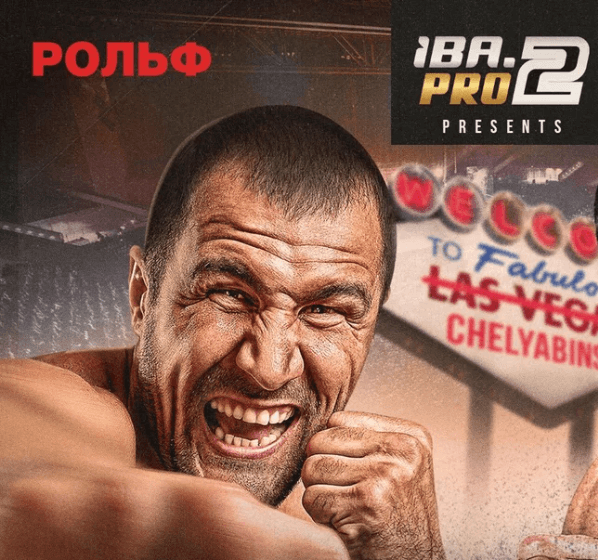
At his peak, former three-time world light heavyweight champion Sergey “Krusher” Kovalev ranked high on everyone’s pound-for-pound list. Now 42 years old – he turned 42 earlier this month – Kovalev has been largely inactive in recent years, but last night he returned to the ring in his hometown of Chelyabinsk, Russia, and rose to the occasion in what was billed as his farewell fight, stopping Artur Mann in the seventh frame.
Kovalev hit his peak during his first run as a world title-holder. He was 30-0-1 (26 KOs) entering first match with Andre Ward, a mark that included a 9-0 mark in world title fights. The only blemish on his record was a draw that could have been ruled a no-contest (journeyman Grover Young was unfit to continue after Kovalev knocked down in the second round what with was deemed an illegal rabbit punch). Among those nine wins were two stoppages of dangerous Haitian-Canadian campaigner Jean Pascal and a 12-round shutout over Bernard Hopkins.
Kovalev’s stature was not diminished by his loss to the undefeated Ward. All three judges had it 114-113, but the general feeling among the ringside press was that Sergey nicked it.
The rematch was also somewhat controversial. Referee Tony Weeks, who halted the match in the eighth stanza with Kovalev sitting on the lower strand of ropes, was accused of letting Ward get away with a series of low blows, including the first punch of a three-punch series of body shots that culminated in the stoppage. Sergey was wobbled by a punch to the head earlier in the round and was showing signs of fatigue, but he was still in the fight. Respected judge Steve Weisfeld had him up by three points through the completed rounds.
Sergey Kovalev was never the same after his second loss to Andre Ward, albeit he recaptured a piece of the 175-pound title twice, demolishing Vyacheslav Shabranskyy for the vacant WBO belt after Ward announced his retirement and then avenging a loss to Eleider Alvarez (TKO by 7) with a comprehensive win on points in their rematch.
Kovalev’s days as a title-holder ended on Nov. 2, 2019 when Canelo Alvarez, moving up two weight classes to pursue a title in a fourth weight division, stopped him in the 11th round, terminating what had been a relatively even fight with a hellacious left-right combination that left Krusher so discombobulated that a count was superfluous.
That fight went head-to-head with a UFC fight in New York City. DAZN, to their everlasting discredit, opted to delay the start of Canelo-Kovalev until the main event of the UFC fight was finished. The delay lasted more than an hour and Kovalev would say that he lost his psychological edge during the wait.
Kovalev had two fights in the cruiserweight class between his setback to Canelo and last night’s presumptive swan song. He outpointed Tervel Pulev in Los Angeles and lost a 10-round decision to unheralded Robin Sirwan Safar in Riyadh, Saudi Arabia.
Artur Mann, a former world title challenger – he was stopped in three rounds by Mairis Briedis in 2021 when Briedis was recognized as the top cruiserweight in the world – was unexceptional, but the 34-year-old German, born in Kazakhstan, wasn’t chopped liver either, and Kovalev’s stoppage of him will redound well to the Russian when he becomes eligible for the Boxing Hall of Fame.
Krusher almost ended the fight in the second round. He knocked Mann down hard with a short left hand and seemingly scored another knockdown before the round was over (but it was ruled a slip). Mann barely survived the round.
In the next round, a punch left Mann with a bad cut on his right eyelid, but the German came to fight and rounds three, four and five were competitive.
Kovalev had a good sixth round although there were indications that he was tiring. But in the seventh he got a second wind and unleashed a right-left combination that rolled back the clock to the days when he was one of the sport’s most feared punchers. Mann went down hard and as he staggered to his feet, his corner signaled that the fight should be stopped and the referee complied. The official time was 0:49 of round seven. It was the 30th KO for Kovalev who advanced his record to 36-5-1.
Addendum: History informs us that Farewell Fights have a habit of becoming redundant, by which we mean that boxers often get the itch to fight again after calling it quits. Have we seen the last of Sergey “Krusher” Kovalev? We woudn’t bet on it.
The complete Kovalev-Mann fight card was live-streamed on the Boxing News youtube channel.
To comment on this story in the Fight Forum CLICK HERE
-
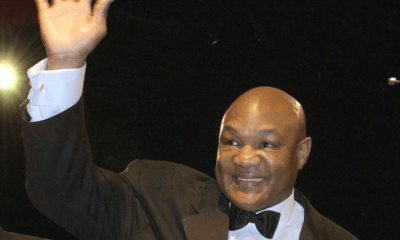
 Featured Articles4 weeks ago
Featured Articles4 weeks agoA Paean to George Foreman (1949-2025), Architect of an Amazing Second Act
-
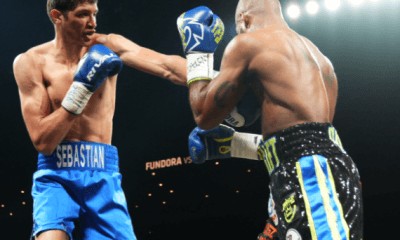
 Featured Articles4 weeks ago
Featured Articles4 weeks agoSebastian Fundora TKOs Chordale Booker in Las Vegas
-
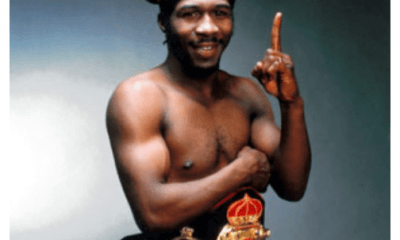
 Featured Articles4 weeks ago
Featured Articles4 weeks agoBoxing Odds and Ends: The Wacky and Sad World of Livingstone Bramble and More
-
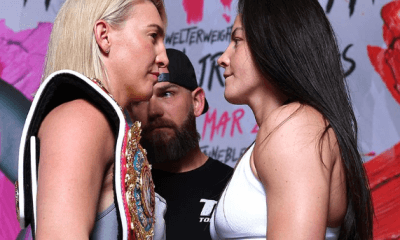
 Featured Articles3 weeks ago
Featured Articles3 weeks agoAvila Perspective, Chap. 319: Rematches in Las Vegas, Cancun and More
-

 Featured Articles3 weeks ago
Featured Articles3 weeks agoRingside at the Fontainebleau where Mikaela Mayer Won her Rematch with Sandy Ryan
-
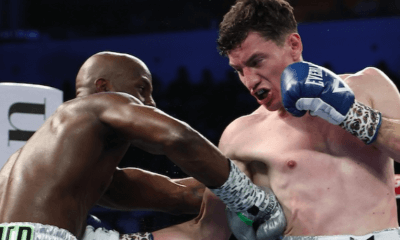
 Featured Articles3 weeks ago
Featured Articles3 weeks agoWilliam Zepeda Edges Past Tevin Farmer in Cancun; Improves to 34-0
-
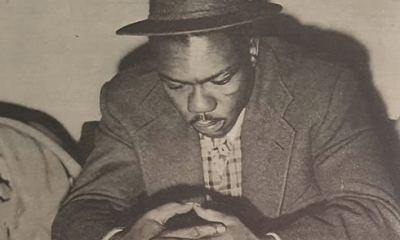
 Featured Articles3 weeks ago
Featured Articles3 weeks agoHistory has Shortchanged Freddie Dawson, One of the Best Boxers of his Era
-
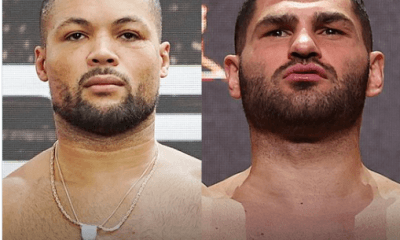
 Featured Articles2 weeks ago
Featured Articles2 weeks agoAvila Perspective, Chap. 320: Women’s Boxing Hall of Fame, Heavyweights and More















